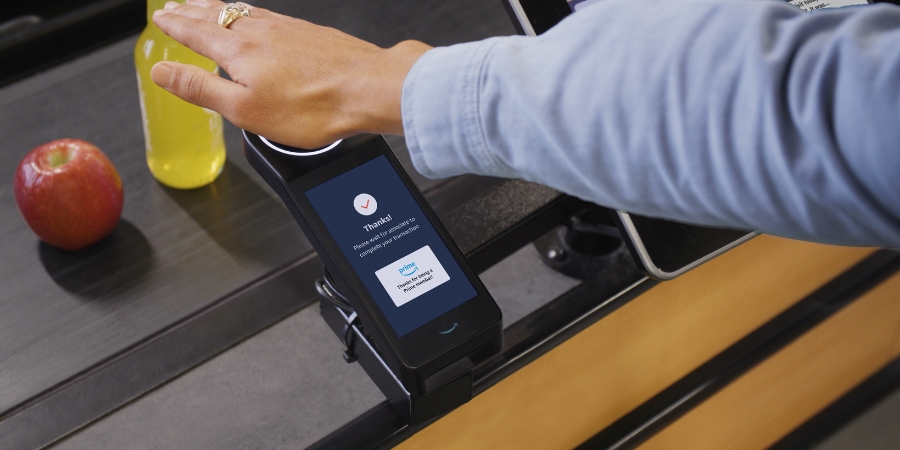
Photo: Amazon
Are Consumers Ready To Pay by Palm?
Amazon is bringing Amazon One palm recognition capabilities to all 500+ Amazon-owned Whole Foods stores nationwide by year-end in a major expansion of the payment technology.
Customers pay by waving their palm over a circular scanner, which associates the unique characteristics of the user’s palm with their bank account. Newer features enable age verification and linking to loyalty accounts.
Since its 2020 launch, Amazon One has reached over 400 locations across the U.S., including over 200 Whole Foods and Amazon Go stores as well as stadiums, casinos, and several other grocery and convenience stores. In March, Panera became the first food establishment to deploy Amazon One.
“Since we’ve introduced Amazon One at Whole Foods Market stores over the past two years, we’ve seen that customers love the convenience it provides,” said Whole Foods Chief Technology Officer Leandro Balbinot.
Privacy advocates remain concerned about how such biometric data might be used for advertising and tracking.
Amazon asserts palm recognition is more secure than common identification and payment methods. Unlike a credit card or password, Amazon One creates a “palm signature” that can’t be replicated or impersonated because it’s based on someone’s palm and underlying veins. Amazon writes, “This allows us to delete palm signatures, and generate new ones, at any time.”
Customer data is safeguarded in the AWS Cloud, backed by more than 300 cloud security tools. Amazon promises that palm data won’t be used for marketing or shared with third parties unless legally required to comply with a binding order.
Amazon also says that palm recognition is “considered more private than some biometric alternatives because you can’t determine a person’s identity by looking at an image of their palm.”
Amazon was hit by a lawsuit in March for allegedly failing to notify Amazon Go shoppers that it was collecting biometric data, including via palms. Last year, a plan to enable ticketless entry to Denver’s Red Rocks Amphitheater through Amazon One was abandoned after an open letter signed by privacy advocates and artists expressed concerns that biometric identifiers like palm scans and facial recognition threaten to turn places supporting live events “into hotspots for ICE raids, false arrests, police harassment, and stolen identities.”
Discussion Questions
DISCUSSION QUESTIONS: Will consumers likely be more comfortable with palm identification versus other biometric (i.e., face, iris/retina, voice) payment methods? Does payment through palm recognition offer enough convenience to offset privacy and security concerns?
